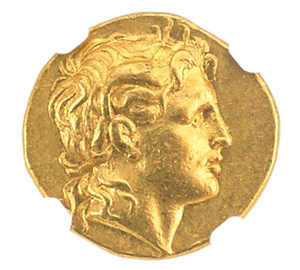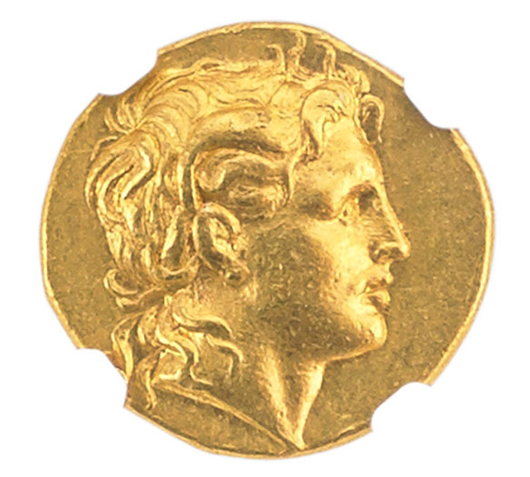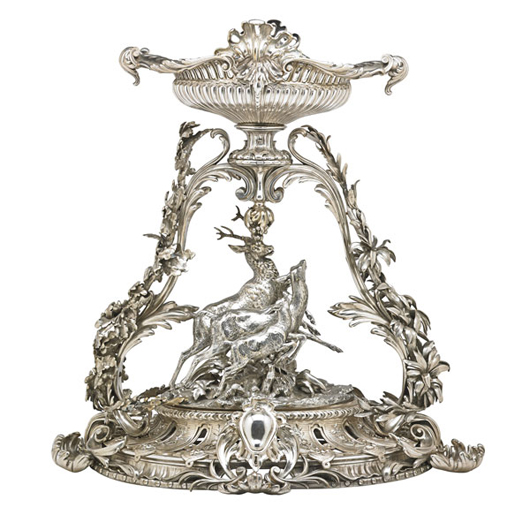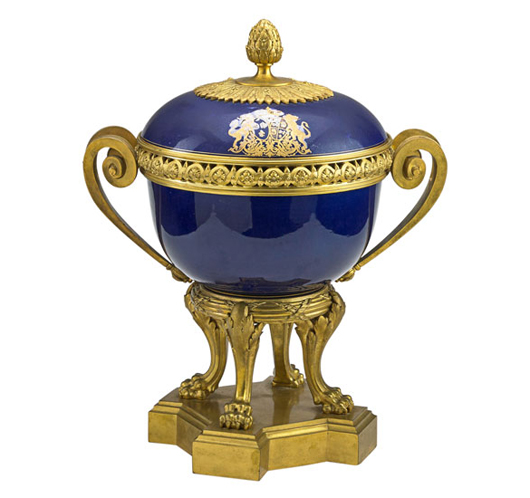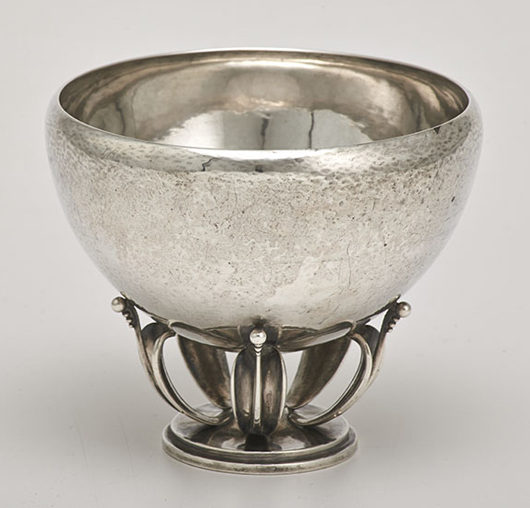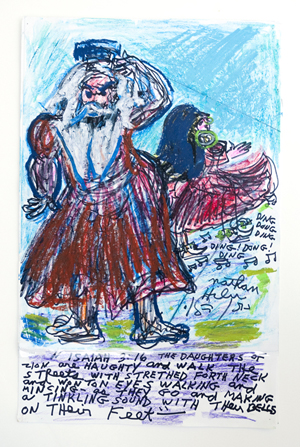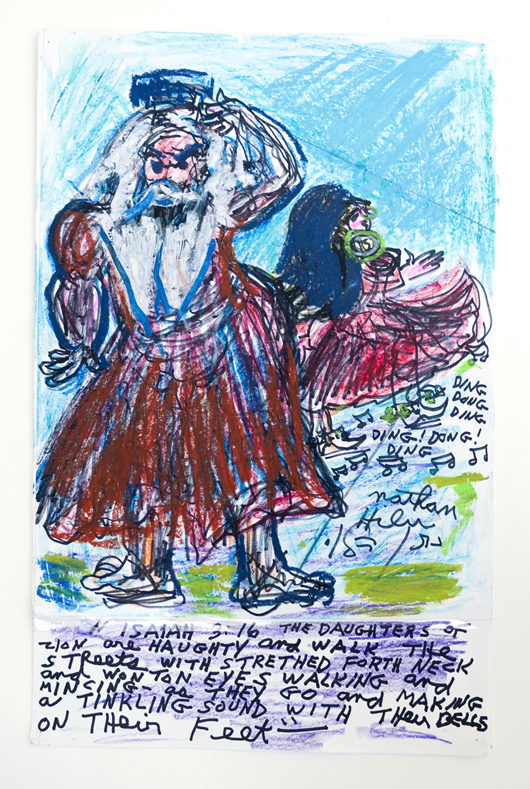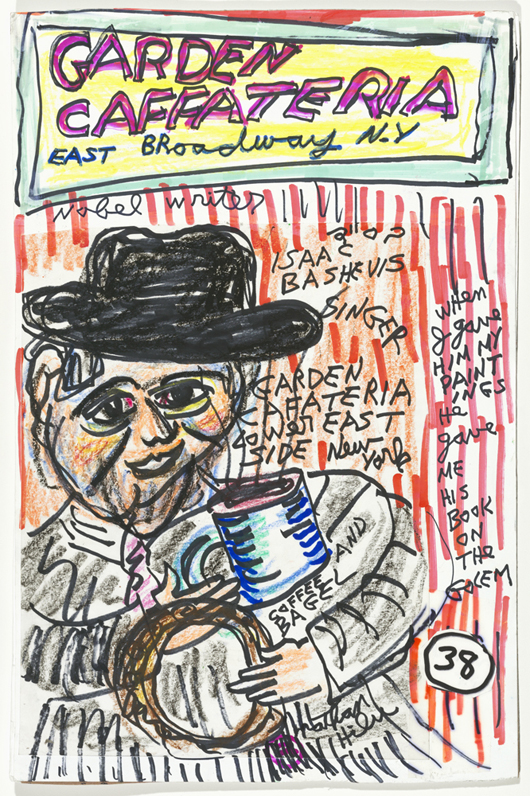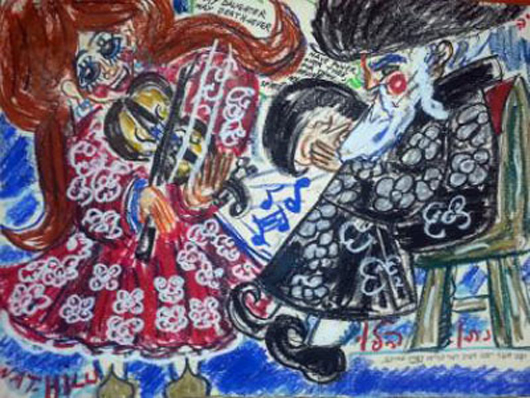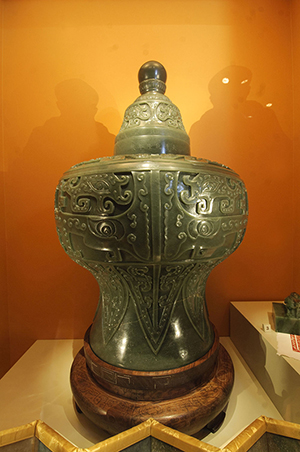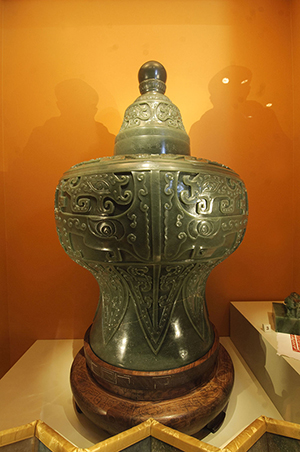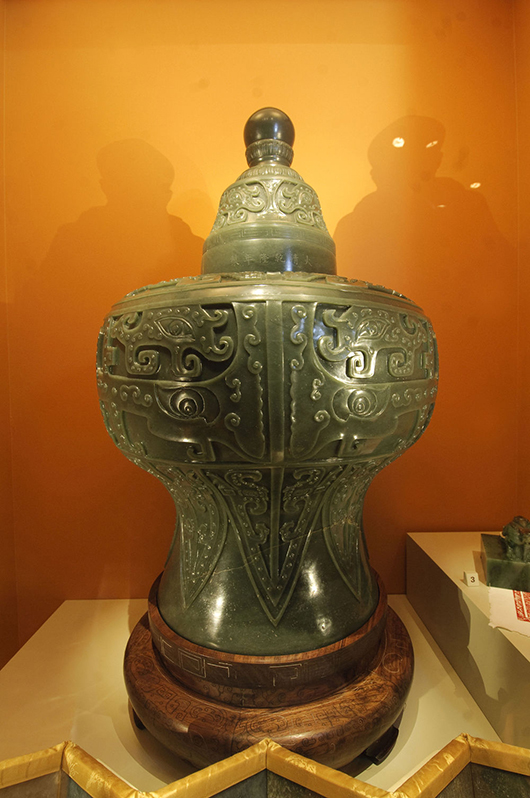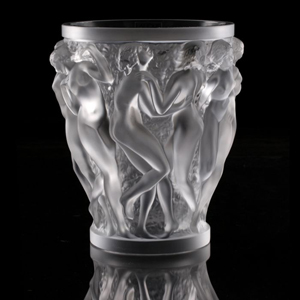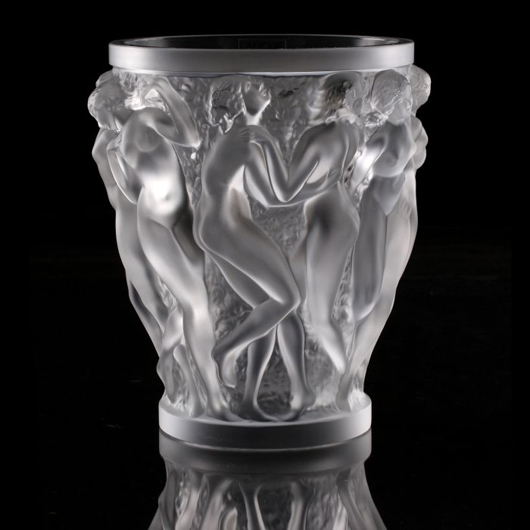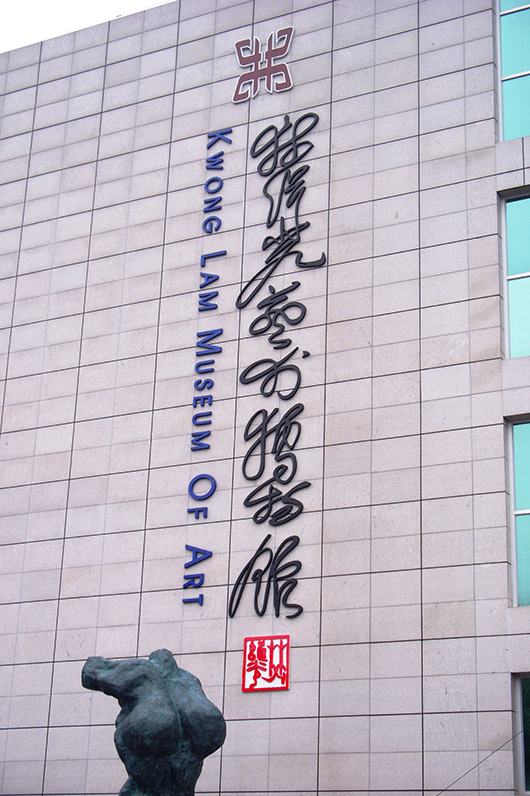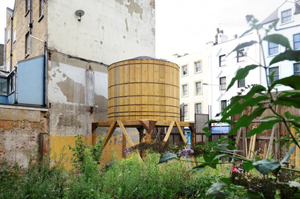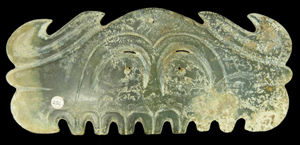
This Hongshan Culture jade ware piece with design of clouds carries an estimate of $300,000-$400,000. Elite Decorative Arts image. BOYNTON BEACH, Fla. – A Chinese Hongshan Culture jade ware piece estimated to bring a staggering $300,000-$400,000, a large Chinese Kangxi period red and blue porcelain vase, and an antique Chinese hand-painted lacquered wooden wall panel depicting dragons are just a few of the expected top lots at Elite Decorative Arts’ Fine Asian Carvings & Works of Art Auction on Saturday, Sept. 20 beginning at 1 p.m. Eastern. Internet live bidding will be facilitated by LiveAuctioneers.com.
The Hongshan Culture jade ware, having a design of clouds and calcification and crystallization throughout, may have actually been estimated conservatively. It was featured in the 2012 Spring Arts Auction at Macau Chung Shun, one of China’s most prestigious auction houses, where it was valued at $500,000 ($100,000 more than Elite’s high figure). The item is 13 5/8 inches long.
The large and impressive Chinese Kangxi period (1662-1722) porcelain vase is hand-painted in iron red and cobalt blue tones. It has gilt accenting throughout and depicts birds of paradise with flowers on branches and rock formations. It was previously purchased by the consignor from Ban-Lao in Paris and has a presale estimate of $6,000-$8,000. The vase stands 18 1/4 inches tall.
The antique Chinese hand-painted lacquer wooden wall panel depicts five dragons among clouds with rock formations and is 32 inches high by 43 1/2 inches wide (est. $8,000-$12,000). Also sold will be a circa 17th century (late Ming to early Qing dynasty) Chinese red cinnabar lacquer relief charger depicting lotus blossoms in a relief design, 12 inches in diameter (est. $10,000-$15,000).
An antique Chinese bronze cloisonné three-footed vase, standing 14 inches tall and with lion’s head handles and a floral and Buddha lion decoration over a light blue ground, is marked to the base Chien Long and should realize $25,000-$35,000. Also, a large Chinese hand-painted blue and white porcelain vase depicting flying dragons and flaming pearls, should hit $2,000-$3,000.
A pair of Chinese hand-painted enameled yellow ground famille rose vases, each one measuring about 11 1/2 inches tall and depicting lotus blossoms with scrolled vines, will be offered as one lot, with a presale estimate of $6,000-$8,000. The sides hold inline red zhuanshu calligraphy Qianlong (1736-1795) reign mark, which are of the period. A fitted presentation box is included.
An antique Chinese mottled green jadeite handled urn, featuring foo lion handles carved in relief, 4 inches in height, should garner $1,000-$1,200. The vessel is etched with beautiful scroll design and loop handles extending from the foo lion’s mouth. The pale green matric display patches of brilliant green apple and spinach-green striations. The lot comes with a fitted base.
A Chinese silver and enameled wisteria box measuring 4 inches wide by 2 1/2 inches tall, with a beautiful enameled floral design to the top and enameled wisteria hanging to the sides (weighing 12 troy ounces) should command $5,000-$6,000. Also, a handmade Chinese coral and a woman’s 14K yellow gold ring (size 11), custom made in the 1970s for $15,000, having a red coral bird of paradise with turquoise, lapis, peridot and amber accent stones, should reach $5,000-$7,500.
A watercolor on paper set in scroll depicting a rooster by Xu Beihong (Chinese, 1895-1953), with calligraphy poems to the left and right, each having two red seals, with an image area of 39 inches long by 15 inches wide, is expected to rise to $8,000-$12,000. Also, a huge green Chinese celadon glaze bowl having an incised lotus blossom design throughout, made circa the Qing dynasty (1644-1911), 6 3/4 inches tall by 14 3/4 inches in diameter, should fetch $4,000-$6,000.
Rounding out just some of the day’s expected top lots is an important set of four antique Chinese panels, each one containing four hand-painted plaques (16 plaques total) depicting various birds (est. $1,000-$2,000). The plaques appear to be turn of the 20th century, in newer wood mounts. The wood finish is beautiful, both front and back. The total length, with wood mount: 61 inches tall.
To learn more about Elite Decorative Arts and the Sept. 20 Fine Asian Carvings & Works of Art Auction, call them at 561-200-0893 or send an e-mail to info@eliteauction.com.
ADDITIONAL LOTS OF NOTE
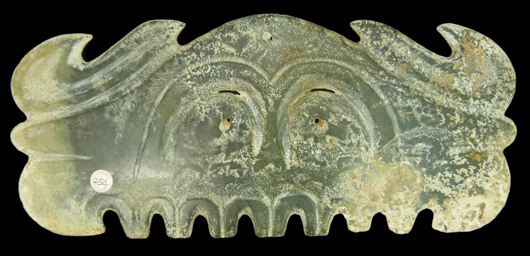

Antique Chinese mottled green jadeite urn featuring foo lion handles carved in relief, 4 inches tall (est. $1,000-$1,200). Elite Decorative Arts image. 
Large and impressive Chinese hand-painted iron red and cobalt blue tone vase, 18 1/4 inches tall (est. $6,000-$8,000). Elite Decorative Arts image. 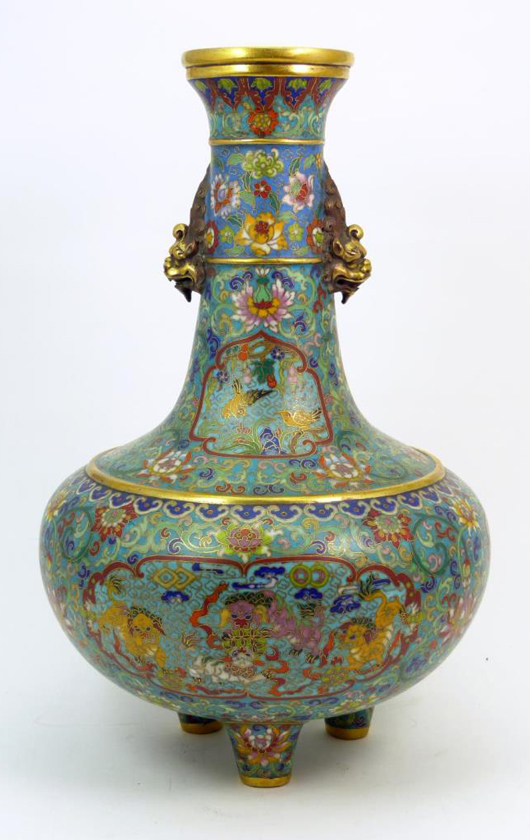
Antique Chinese bronze cloisonné footed vase with lion’s head handles, 14 inches tall (est. $25,000-$35,000). Elite Decorative Arts image. 
Chinese 17th century red cinnabar lacquered plate depicting lotus blossoms in a deep relief design (est. $10,000-$15,000). Elite Decorative Arts image. 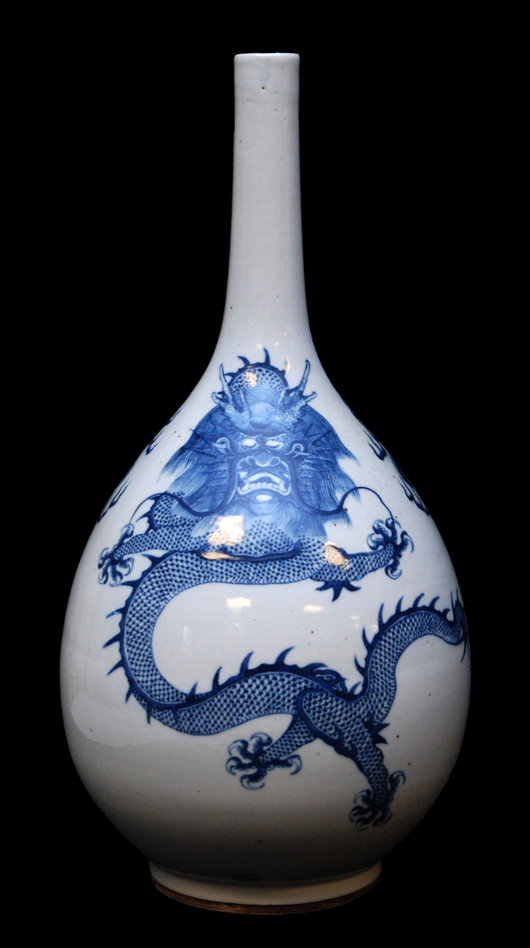
Large Chinese hand-painted blue and white porcelain vase depicting two flying dragons (est. $2,000-$3,000). Elite Decorative Arts image. 
Antique Chinese hand-painted lacquered wooden wall panel depicting five dragons among clouds (est. $8,000-$12,000). Elite Decorative Arts image.


